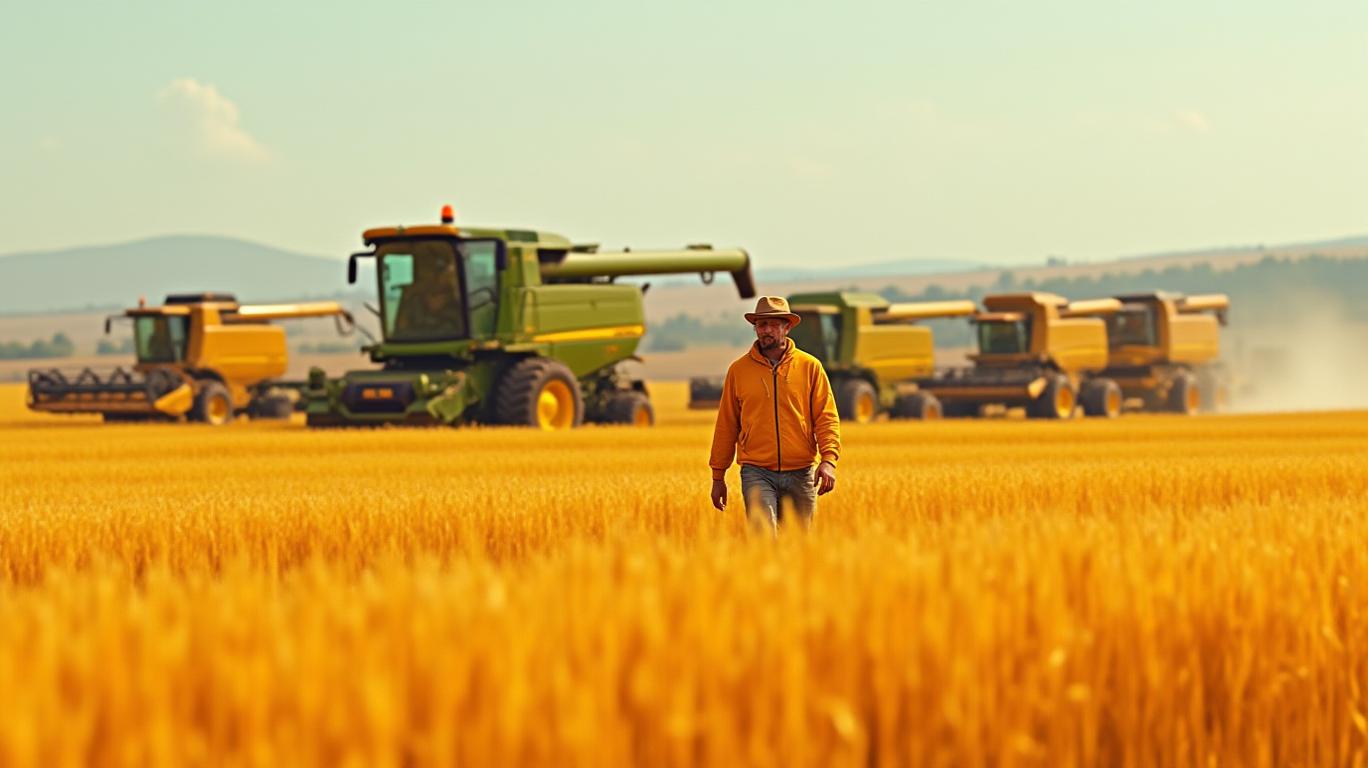John Deere's Q2 2025 Earnings: Navigating Challenges with Technology and Resilience
Investors will closely scrutinize John Deere’s upcoming second-quarter 2025 earnings report, due out on Thursday, May 15, for signs of progress in overcoming persistent headwinds. With consensus estimates projecting a year-over-year drop in earnings per share (EPS) to $5.56 from $8.53 in Q2 2024, the focus will be on whether
can demonstrate resilience through margin improvements, technology-driven growth, and strategic adaptations to macroeconomic pressures.
Q1 2025 Results: A Mixed Start
The first quarter of 2025 provided a glimpse of the challenges ahead. Net sales fell 30% year-over-year to $8.51 billion, driven by weaker demand in construction and forestry segments, while net income dropped to $869 million, or $3.19 per share. However, margins in equipment operations improved to 7.7%, reflecting cost discipline. The financial services division, which accounts for a growing portion of Deere’s profitability, posted $230 million in net income, highlighting its stability amid softness in equipment sales.
What to Watch in Q2
1. Sales Recovery in Key Markets: Analysts will assess whether Deere’s sales in Brazil and Europe—critical markets for its agricultural equipment—are rebounding. Strong farmer sentiment in these regions, particularly in Brazil, has been a bright spot, with over 1,500 Precision Ag Essentials kits ordered in the first quarter. A pickup in construction equipment demand, however, remains uncertain amid global economic sluggishness.
2. Margin Trends: With input costs under pressure, Deere’s ability to sustain or expand margins will be critical. The company has leaned into automation and precision agriculture technologies, such as autonomous tractors and data-driven farm management systems, to justify premium pricing and offset volume declines.
3. Trade Policy Risks: Jefferies analysts recently flagged potential European counter-tariffs on U.S. agricultural machinery as a risk, which could impact Deere’s second-half performance. Management’s commentary on trade-related risks and contingency plans will be closely monitored.
The Bigger Picture: Guidance and Long-Term Strategy
Deere’s full-year 2025 guidance calls for net income between $5.0 billion and $5.5 billion, a significant drop from 2024’s $6.9 billion. Analysts expect EPS to decline by 26% year-over-year to $18.91 in 2025 but rebound 12% to $21.22 in 2026. This outlook hinges on Deere’s ability to execute its strategy of shifting toward higher-margin services, technologies, and sustainability initiatives, such as electrification and precision farming solutions.
The stock (DE) has held up well despite these headwinds, rising 17% over the past 52 weeks to $460—a 15% premium to the S&P 500. Analysts maintain a “Moderate Buy” consensus, with a $494.40 price target, implying a 7.4% upside. This optimism reflects confidence in Deere’s long-term positioning as a leader in agriculture technology and its capacity to navigate cyclical downturns.
Conclusion: A Test of Resilience and Innovation
John Deere’s Q2 results will be a litmus test for its ability to weather industry-wide challenges while capitalizing on its technological edge. Even with the expected EPS decline, the company’s margin improvements and financial services stability suggest underlying strength. Should Deere deliver on its 2026 rebound forecasts—driven by recovering equipment demand, margin resilience, and rising service revenues—the stock could outperform further.
Investors should also watch for updates on sustainability initiatives, such as its partnerships for electric machinery and carbon-capture projects, which could open new revenue streams. With geopolitical and macroeconomic risks lingering, Deere’s execution of its strategy will determine whether it can maintain its status as a global leader in agriculture and construction equipment. The May 15 earnings call will be the first major checkpoint in this journey.

Comments
No comments yet